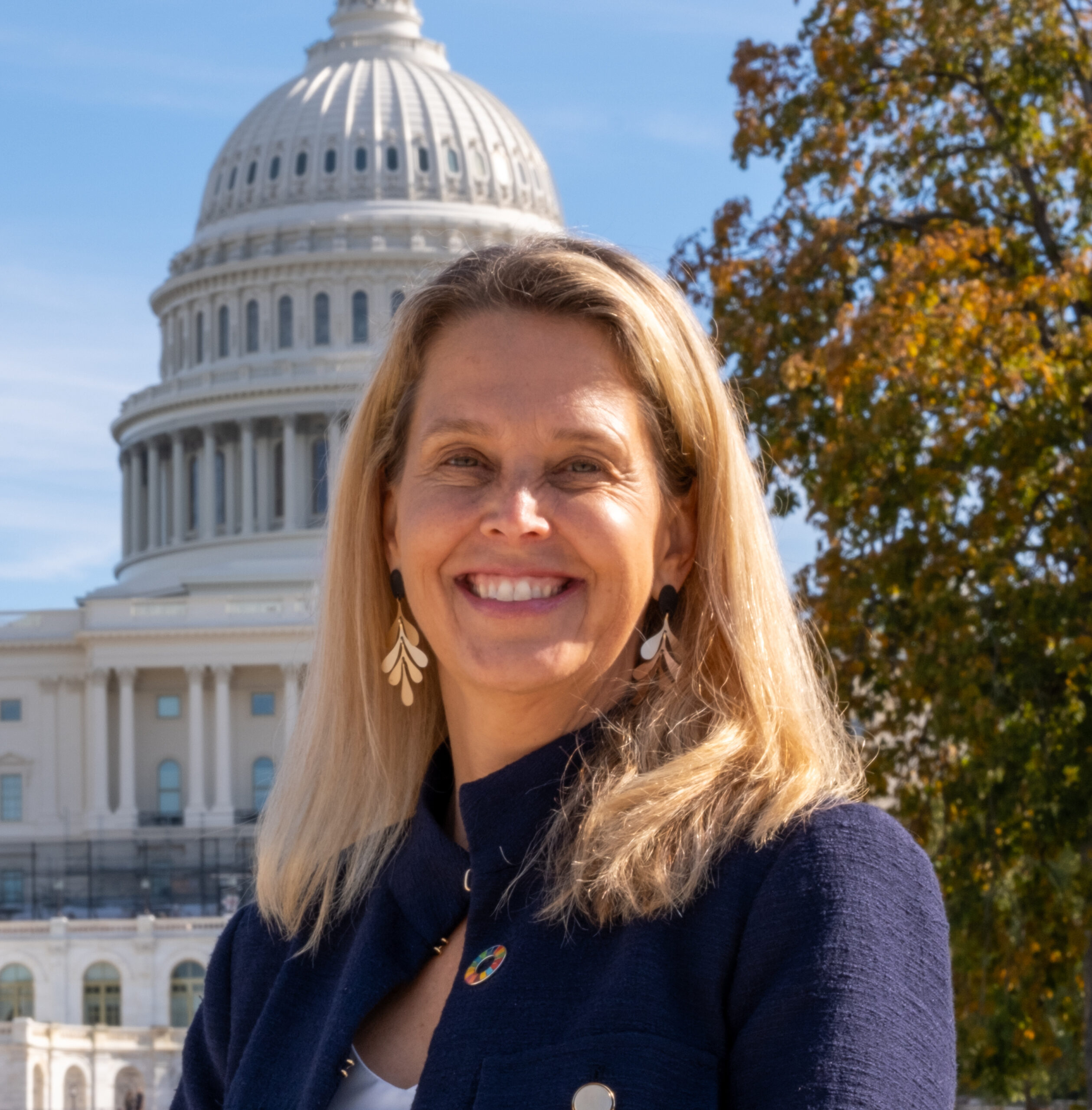My Visit to the UNICEF Global Supply and Logistics Hub in Copenhagen
Executive Director Martha Rebour reports from UNICEF's Global Supply and Logistics Hub, a key part of the global vaccine distribution chain.
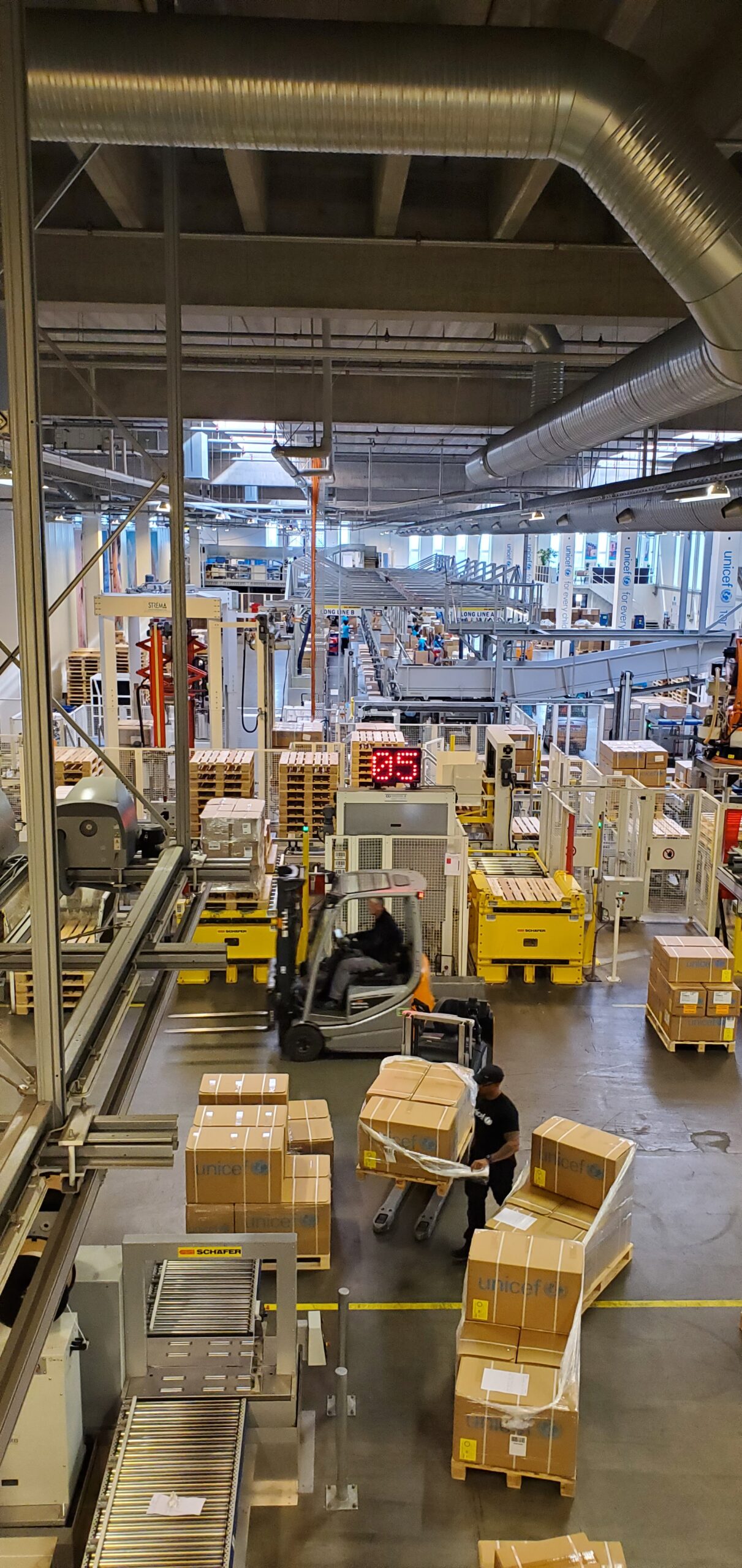
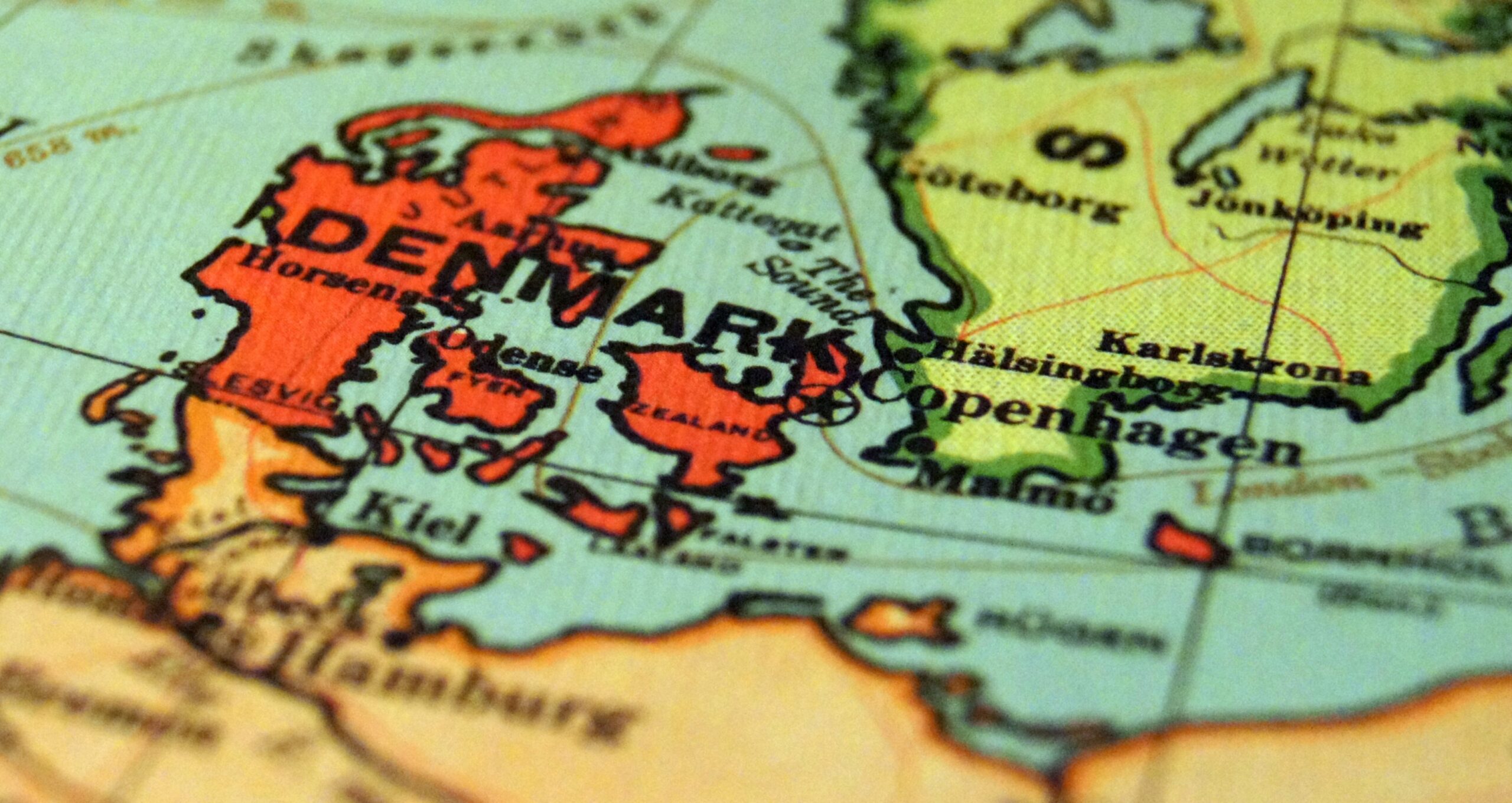
Photo: Unsplash/@travelsnips
Copenhagen is known for wonders like Tivoli Gardens and the Little Mermaid statue, which attract tourists from around the world. Recently, I traveled there to see a lesser-known but tremendously important wonder, the UNICEF Global Supply and Logistics Hub. It is the largest humanitarian warehouse for children in the world, spanning more than 215,000 square feet.
It is a truly impressive and efficient operation, and I am excited to share some of what I took away from my visit there:
UNICEF employees are very dedicated
What impacted me the most during my visit to the UNICEF Supply Division were the people I met there. They are very dedicated to UNICEF’s mission to help children around the world thrive and be healthy, and they understand how important their work to distribute supplies is to reach this goal. It is impressive how diverse the warehouse’s staff is. It’s composed equally of men and women, and consists of a wide variety of professionals including pharmacists, financial experts, nutritionists, and architects.
At the site visit, I learned that during the height of the COVID-19 pandemic, in order to ensure that PPE, COVID-19 tests, and ancillary materials needed for vaccinations could get out, the staff worked seven days a week for weeks on end. Due to the war in Ukraine and the urgency of getting materials out to those affected, many warehouse workers we met were working extra hours. Despite the long hours and stress of working during a pandemic, the employees remained exceptionally motivated, and many shared how privileged they felt to be able to directly help others in emergency settings.
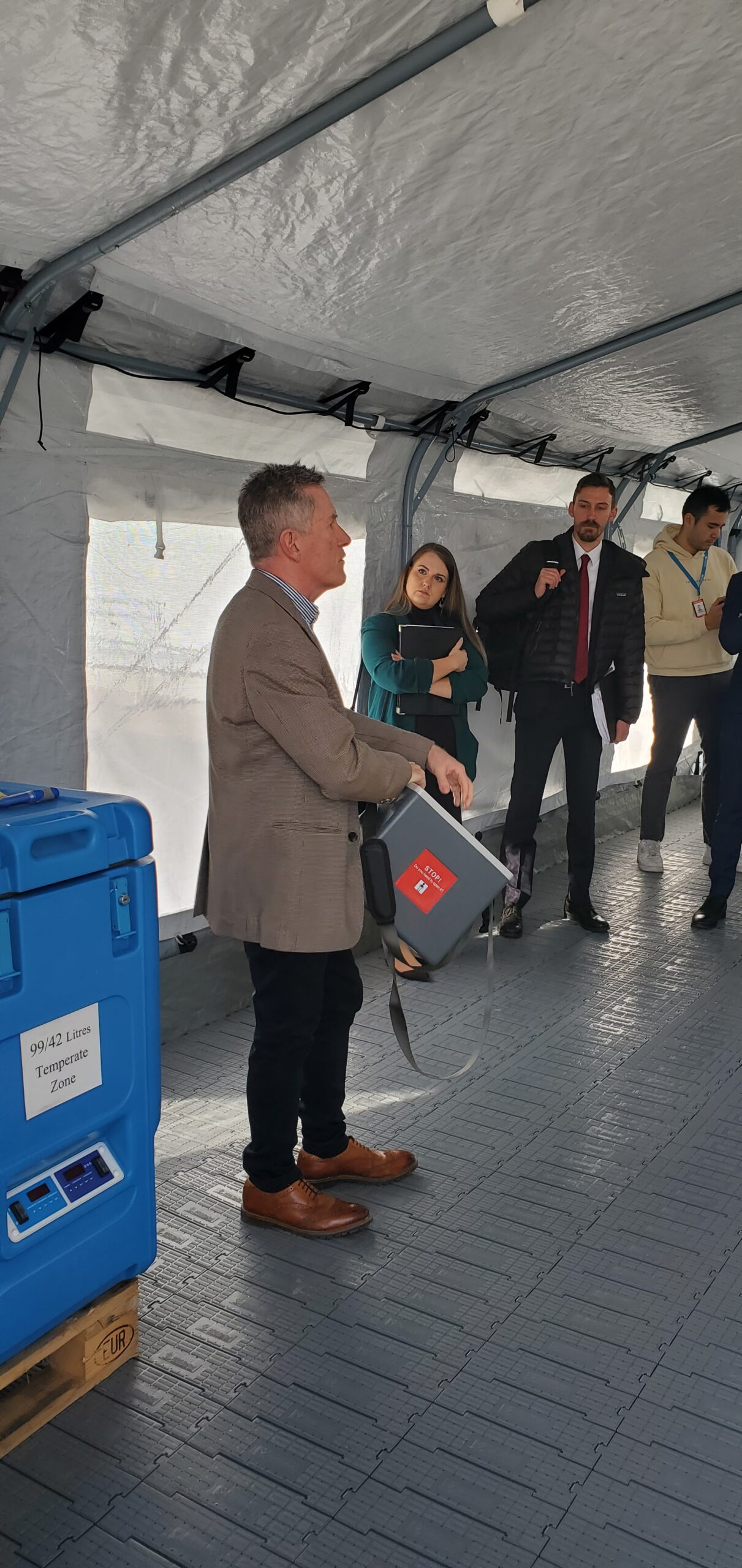
Ukraine is not the only emergency setting or conflict
Although our news is dominated by stories from Ukraine, many other countries such as Yemen, Venezuela, Somalia, Madagascar, and Afghanistan are also facing humanitarian emergencies. As a result, UNICEF is shipping out supplies and kits to those countries too.
A highlight of my trip was a briefing that UNICEF gave us inside a multipurpose emergency tent. These tents can be built in two hours with only a hammer and can be customized according to climate. They serve many purposes: a single tent can seat 40 children as a school or can be customized to be a health clinic, a home, or a UN Blue Dot safe space at a conflict area border crossing. This is where refugees can safely seek assistance and care. The tents also are ingeniously designed, so they can be adapted for warm climates. They have flaps for natural cooling and mosquito netting, along with special insulated flooring for cold climates.
Big numbers mean big impact
The warehouse is the size of three football fields and is the largest of UNICEF’s Supply hubs. The others are in Accra, Brindisi, Dubai, Guangzhou, and Panama. The six UNICEF hubs contain sufficient emergency supplies to meet the needs of 250,000 people for three months.
Despite the tremendous capacity, only five percent of what UNICEF delivers around the globe travels through these hubs. Most deliveries, and most notably vaccines, are shipped in bulk directly from suppliers to the destination country, and others come from local warehouses managed by UNICEF regional and country offices for ongoing programmatic work for children around the world.
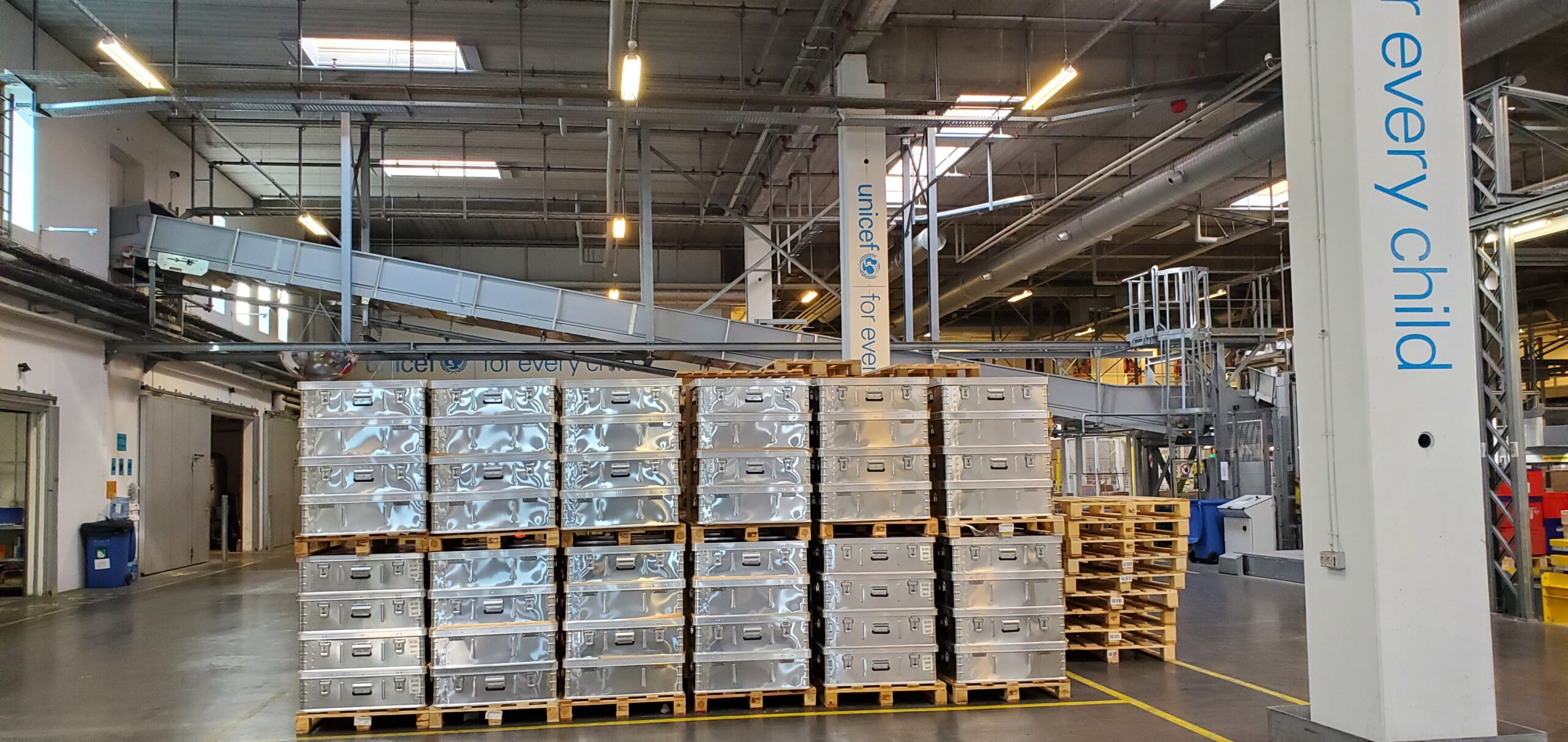
Photo: Martha Rebour
In 2021 alone, the UNICEF Supply Division procured:
- 2.752 billion doses of vaccines
- 1 billion syringes, which they delivered to 95 countries
- $355.5 million in PPE and other non-immunization COVID-19 supplies, including masks, gloves, and face shields
- $175.4 million in nutrition supplies, including more than 40,000 tons of ready-to-use therapeutic food, which is a peanut-based paste that UNICEF has found to be the most effective tool for treating acute and severe acute malnutrition
- 800 ultra cold chain vaccine freezers, with a storage capacity of 200 million mRNA vaccines, which they delivered to 70 countries
To give you an idea of the increase in activity and volume since the beginning of the outbreak, UNICEF shipped the equivalent of $4.46 billion in goods from the warehouse in 2020, but that number jumped to $7.1 billion in 2021. (More than a quarter of the materials went to central and Western Africa).
A Very Modern and Efficient Warehouse
The facility does not use any paper to run its operations. The entire warehouse uses a fully scannable and entirely digital system, plus a few robots! Two of the most sophisticated robots have been named Robert and Roberta, which are robotic cranes that lift heavy packages. You can meet Roberta and learn about her big heart for helping children here.
I was so impressed by everything I saw on my visit to this remarkable facility. I left feeling inspired by the UNICEF employees’ determination and dedication, and I am so grateful for UNICEF and all the organization does to help children thrive around the globe. The scale of UNICEF’s work is truly amazing. While we know there is more to be done to reach every child everywhere, a facility like the UNICEF Supply Hub is a great start!
Want to see more footage from this impressive facility and learn about UNICEF’s work?
View @shotatlife’s Instagram highlights section here to watch videos from the warehouse and interviews with the staff.

